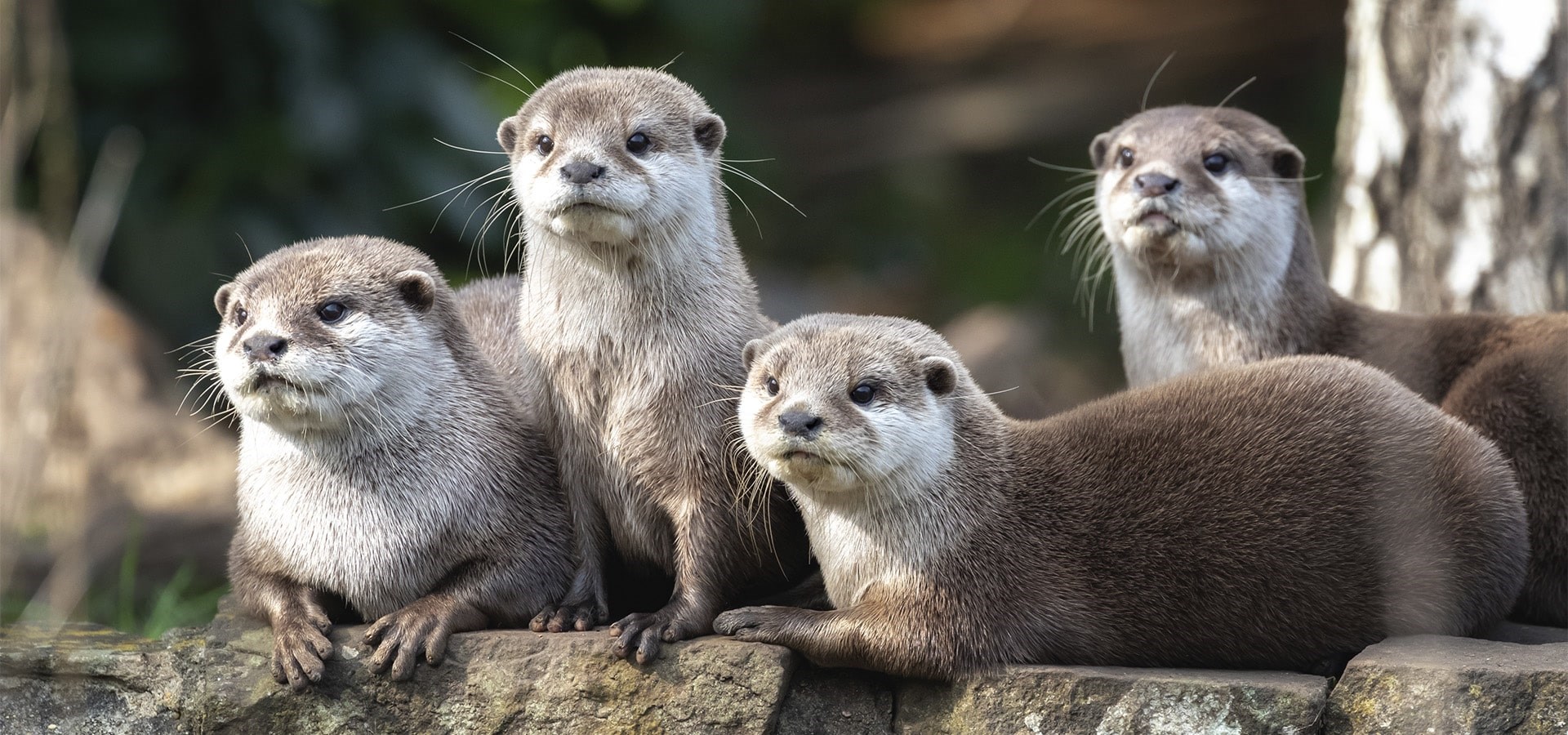
Annual report 2023
New Madagascar facility
In 2023, we opened a brand new cohesive area dedicated to Madagascar's unique wildlife. The facility includes both a walk-through lemur enclosure and a large aviary. Around 88 million years ago, the vast island was separated from the African continent and the subsequent isolation has meant that 80% of Madagascar's mammals are only found here, as is the island's plant life.
That's why we've long wanted to be able to present a unified area with animals from this very special place on earth, and we're proud that we now have a facility that works fantastically well for both animals and visitors.
The facility was built with the support of the Melsen Foundation and designed to provide the lively lemurs with optimal conditions for natural behaviour. There are plenty of climbing opportunities and places where they can enjoy the sun or seek shelter and shade.
The new facility gave us the opportunity to add black lemurs to our animal collection, and once they were well established we moved the cat lemurs from their original enclosure to the new one. We spent a lot of time introducing them to each other and to both the new indoor and outdoor enclosures, and we now have animals that thrive among themselves, use the entire enclosure and function well in their new surroundings.
For visitors, it's now also a completely new experience to be up close to the animals in the outdoor walk-through enclosure. We also get a lot of positive feedback on the inner enclosure, where visitors experience the animals in winter. This enclosure is designed with a thick bed of stones, clay, mulch and withered leaves that can absorb a lot of water and provide high humidity in the enclosure to match the lemurs' natural environment. The bottom also holds 10,000s of woodlice, about 10 kilos of earthworms and thousands of tiny springtails that act as a small cleaning team in the enclosure. The insects feed on leftover food and faeces from the lemurs.
The final part of the Madagascar area is a papyrus lemur facility that will be completed in 2024.N/T)the otters.
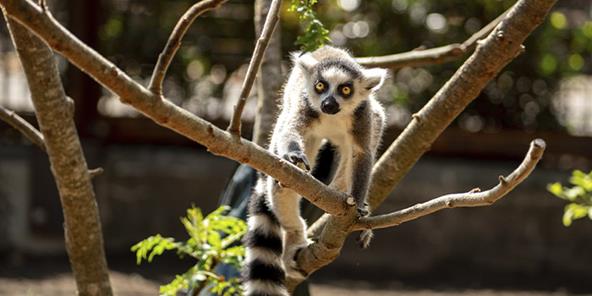
Aalborg's best event venue
We were proud to receive the award as 'Aalborg's Best Event Venue' for the second time at the Aalborg Awards 2023.
The award is a strong signal that Aalborg Zoo is on the right track in our efforts to become a year-round attraction.
So in 2023, we continued the tradition of turning the holidays into festive events.
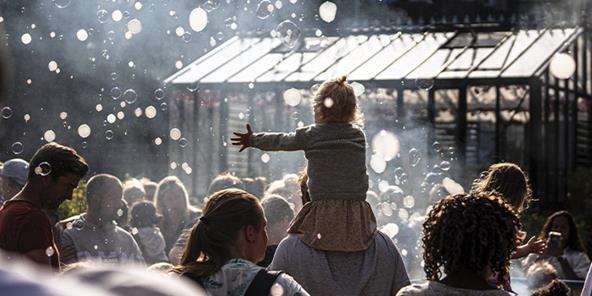
Spooky Cosy Halloween
After the great success of the first year, Halloween returned - bigger and spookier than in 2022.
In addition to an abundance of (un)cosy decorations, lots of pumpkin fun and a host of tiny creepy-crawlies, we added two brand new activities - "The Fisherman's Curse" and "The Food Factory".
We celebrate Halloween in our own animal-centric way, so you could learn about the spooky appetites and droppings of elephants and walk through a large and gloomy cemetery with a focus on biodiversity loss and animal species.
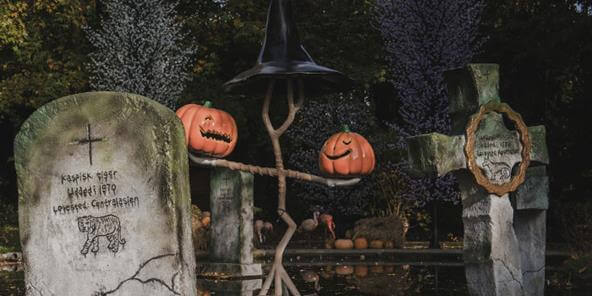
Christmas at the Zoo - Where the magic begins
Christmas at the Zoo 2023 offered a number of new and improved experiences that attracted a large number of visitors. In fact, Christmas at the Zoo provided some of the best-attended days of the year.
With more Christmas lights, more cosy Christmas stalls and a large event programme with entertainment for all ages, we managed to create a magical Christmas experience for the whole family.
We see the high visitor numbers as proof that Christmas at the Zoo has become a regular tradition for many families in North Jutland.
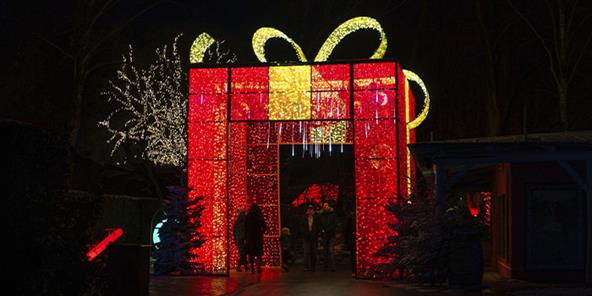
Strategy
Preserve Nature
Aalborg Zoo is in an exciting development, where the strategy "2021-2025 Preserve Nature" also in 2023 set the direction for what we should strive to achieve. The strategy's mission and vision form a strong foundation for how we actively relate to our surroundings and the important role that Aalborg Zoo plays. This applies both as an adventure park and a nature conservation institution. It is also a strategy that supports Aalborg Zoo's ambition to realise our Masterplan 2030 for the physical design of the zoo.
Mission statement
We share knowledge about animals and nature through wildly fascinating experiences and contribute to nature conservation locally and globally.
Vision
Our vision for 2025 is to be a year-round attraction that offers wildly fascinating experiences to an annually growing number of guests and is recognised for its commitment to nature conservation and sustainable development.
"Preserve Nature" continues to provide a fixed benchmark for the activities and initiatives that ensure that we can achieve our vision by constantly focusing on high professionalism, coordination and an eye for the efforts that will strengthen Aalborg Zoo as a year-round attraction with the communication of nature conservation as one of the most important tasks.
As part of the strategy, we continue to work on our brand manifesto to further communicate our key message: Nature is the wildest gift.
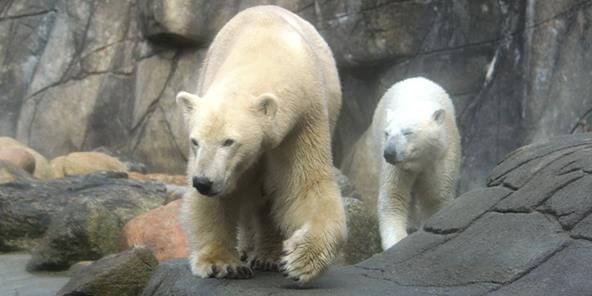
Space
As part of our intensified focus on sustainability, in 2023 we opened the doors to our new and colourful exhibition, The World Space. An exhibition and experience universe that in an engaging, inspiring and creative way focuses on communicating and learning about the UN Global Goals.
The exhibition took visitors on a journey through living spaces, with each room representing a selected SDG. We focused on the senses and invited visitors to create imaginative shadow animals, contribute to an interactive wishing tree and be mesmerised by the massive wind turbine installation that stands as a spectacular portal over the garden's iconic Bear Man.
The World Space not only provides an understanding of the selected SDGs, but also inspiration to translate them into everyday actions. The exhibition is designed to motivate visitors to take action, and we believe that small actions can have a significant impact.
Established through a partnership with Siemens Games and supported by Knud Højgårds Fond and Sydbank Fonden, the World Space will be further developed in 2024 in partnership with Himmerland Boligforening.
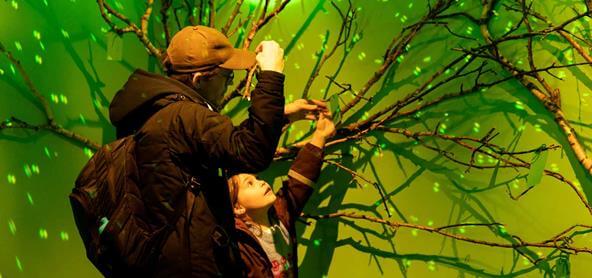
Animal collection 2023
Breeding programmes
Aalborg Zoo has for many years participated in the established breeding programmes within EAZA - European Association of Zoos and Aquaria. By participating in these breeding programmes, we help to ensure that the populations in zoos have a high genetic diversity at all times, so that they form a healthy basis for future generations. Genetic diversity is important when working with the reintroduction of animals into the wild. Without it, animals will not be able to adapt to changes in nature over time.
EAZA is currently reviewing all animal species and their role in zoological facilities going forward. This work is happening in line with broader collaboration across conservation organisations - both in-situ and ex-situ. This is good and valuable work, which also emphasises that through collaboration we can go even further in the conservation of endangered species and their habitats.
By the end of 2023, Aalborg Zoo was part of 31 European breeding collaborations and also has 6 species that are pedigreed and monitored within EAZA.
In 2023, Aalborg Zoo sent individuals of several species to other zoos for breeding, and several new cubs were born.
Lion cubs
In 2022, Aalborg Zoo received two Asiatic lionesses from Edinburgh Zoo, and it wasn't long before our breeding male, Aakash, mated with them both, and with good results. In mid-June 2023, we were lucky enough to have three lion cubs. Already in August, our second female had four cubs and we can now look forward to having a large and well-functioning lion pride.
All cubs are thriving and after sexing, we can confirm that we have one male and six females. From January 2025, they will be ready to be shipped to zoos across Europe and contribute to the breeding programme for the critically endangered species.
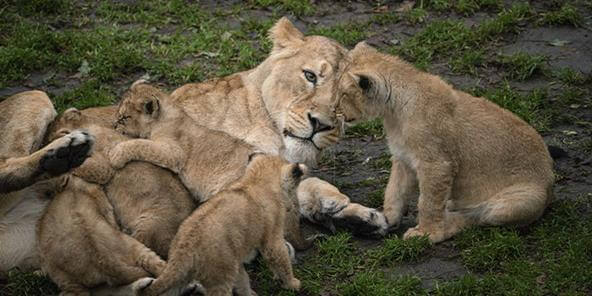
Egyptian tortoise
Aalborg Zoo is the only place in Denmark that houses the Egyptian tortoise. The species is critically endangered and close to extinction in the wild. It has therefore long been an ambition to breed with the turtles, and after we changed the conditions for them in a number of ways in 2023, we finally succeeded. In July 2023, the first Egyptian tortoise hatched at Aalborg Zoo, and a few months later another one. It was really great to see a positive result of our efforts, and we are proud that we can contribute to the breeding of this critically endangered species.
Dwarf goddesses breeding in new facility
Following the opening of our new orangutan enclosure in 2022, in August we introduced a pair of Asian dwarf pandas to the enclosure. The two species in the same enclosure enrich each other with mutual curiosity, wonder and activity. And in 2023, there was even more life in the facility, because in October the otters had three pups. The little mini otters are a sight to behold - even for the hard-pressed zookeepers, who have been given even more cleaning and tidying up after the little messes.
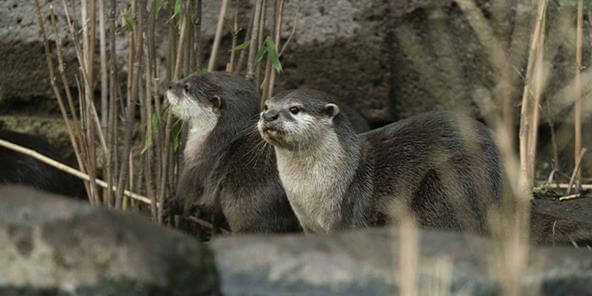
Dwarf hippo tongue
In November, we got a baby pygmy hippo. The little female was named Nimba, which is the name of a mountain massif located in West Africa between Liberia, Ivory Coast and Guinea, where the pygmy hippo lives.
As only a few pygmy hippos were born in the breeding programme in 2023, the birth of the little female was a great joy for both us and the species coordinator at EAZA.
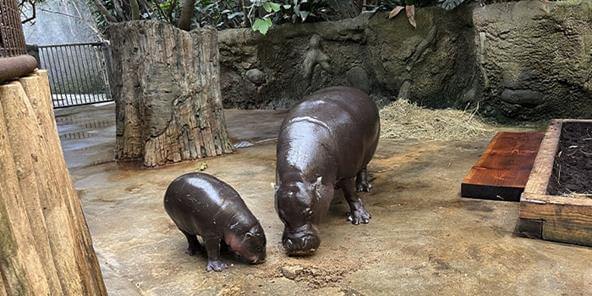
Giraffes to Europe
The breeding of giraffes at Aalborg Zoo has been extremely successful for many years. This also means that we send many giraffes out of the garden, and our offspring are now spread throughout Europe.
In June we got a new calf. It was a female called Lewyn - named after the Black Mamba that runs the Bush Babies programme in South Africa, which Aalborg Zoo co-owns.
In November, we sent our bull calf Pixie to Kristiansand Zoo to great press attention, because it's not every day that a giraffe travels by ferry to Norway.
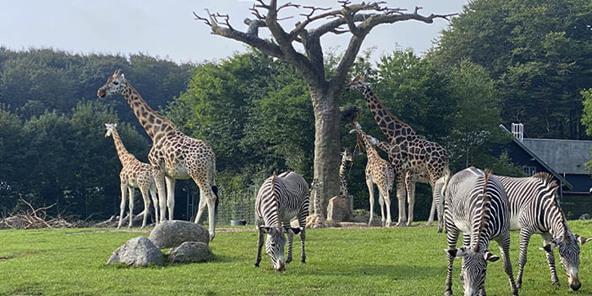
Killing an elephant
2023 was also the year we got one less elephant in our facility.
The health of one of our female elephants, Bibi, was deteriorating and she was increasingly suffering from side effects from the treatment of a chronic disease. For a number of years, Bibi had experienced periods of fluid accumulation, known as oedema, under her abdomen. Without treatment, the oedema would have been life-threatening. After several thorough examinations and with the help of foreign elephant experts, Bibi was treated with adrenal cortex hormone, and together with dietary supplements, regular baths and extra skin care, this prevented her from developing oedema for a while. Unfortunately, adrenal cortical hormone has a number of side effects that eventually plagued Bibi to such an extent that we decided it was time to euthanise her.
The decision to cull was made in consultation with the African Elephant Breeding Coordinator.
It was a difficult decision, and one that required careful consideration. Elephants have a distinct personality, and Bibi was a particularly tolerant and cooperative elephant who, along with our other two female elephants, has been part of the garden's history for many years. But saying goodbye to Bibi was a necessary decision where the welfare of the elephant was the most important consideration.
We have subsequently focused on ensuring that the two remaining elephants functioned well without Bibi. A process that takes time.
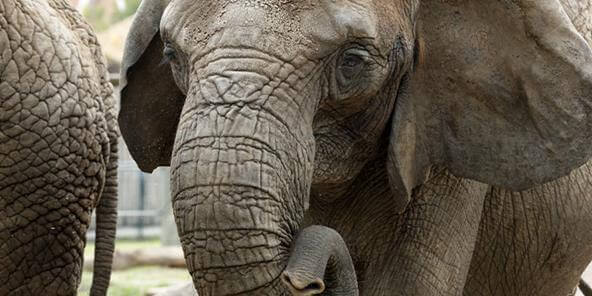
Aalborg Zoo in the world
In collaboration with external partners, Aalborg Zoo works for nature conservation in several parts of the world. In 2023, we supported with close to DKK 600,000. In addition to financial support, we provide information about the individual projects around the zoo. Through our membership in DAZA We also participate in a working group for collaboration on national nature conservation programmes.
Transfrontier Africa
Aalborg Zoo is particularly involved in Transfrontier Africa's work - including Black Mamba APU and the Bush Babies programme in South Africa.
Transfrontier Africa has four main functions:
Combating poachers
"The Black Mamba APU serves as the reserve's first and foremost defence against poachers and is the world's first female anti-poaching unit. Black Mambas patrol the area daily, observing and collecting snares to protect wildlife and reporting suspicious activity.
Wildlife Rescue
Transfrontier Africa coordinates wildlife rescue operations in the reserve.
Research and development
Transfrontier Africa acts as a scientific advisor to the nature reserve, so that scientifically documented papers can be relied upon when making crucial decisions.
Education and training
The young female rangers work to create an understanding that the benefits of protecting and conserving wildlife are greater than the more short-term gains from poaching. They do this through the Bush Babies education programme.
In 2022, we played a crucial role in ensuring the programmes' continued existence as they were about to lose their government funding and with it the salaries of the 42 women working as Black Mambas.
We co-founded the Black Mamba Alliance, an initiative in which 11 shareholders jointly sponsor the salaries of Black Mambas and Bush Babies. Aalborg Zoo has signed up for a share, as have Aalborg Zoo staff. As a co-owner, you automatically become a member of the board, and the work in 2023 has primarily focused on finding a good working method for the board, and we are now really starting to benefit from each other and stand together for the work of Black Mamba and Bush Babies.
In January 2023, Anette Sofie Warncke Nutzhorn, Nature Conservation Manager at Aalborg Zoo, and zookeeper Paw Gosmer visited the project for three weeks. They gained a greater understanding of the collaboration and ideas on how we can continue to improve our efforts.
In 2023, we also organised an African Wildlife Night - a special event where staff worked for free. The proceeds from the evening and an amount normally set aside for Christmas gifts went towards paying the staff's share of the alliance. Craig Spencer, CEO of Transfrontier Africa and creator of Black Mamba and Bush Babies, was on hand to meet guests in the garden and talk about the project.
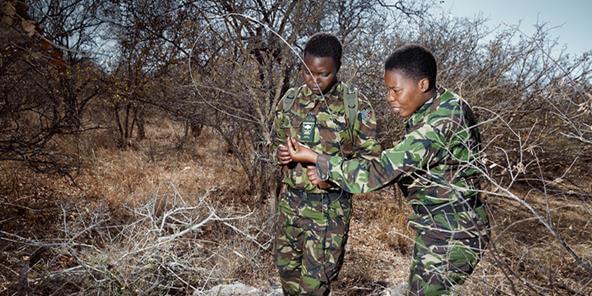
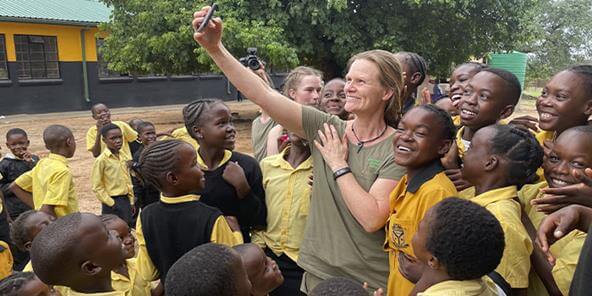
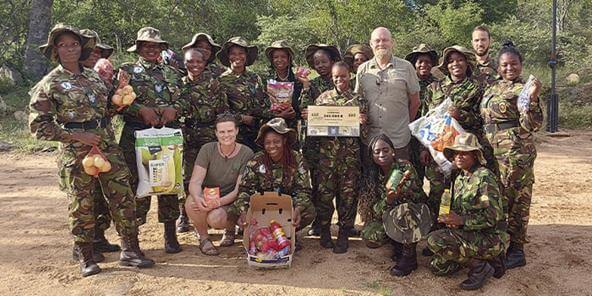
Project Barn Owl
Back in the 1960s, the barn owl was one of Jutland's most common owl species. Unfortunately, this is not the case today. The barn owl, Denmark's smallest breeding owl, is now one of the most endangered owl species in Denmark, and it risks disappearing as a native species if nothing is done.
The Barn Owl and its decline has attracted attention from many quarters, and in 2020 a national working group was established under the Wildlife Management Council, consisting of the Danish Agriculture & Food Council, DOF, DN, Dyrenes Beskyttelse and the Danish Hunters' Association, with the aim of ensuring an even greater focus on saving the Barn Owl.
In a collaboration between the Wildlife Management Council's working group, Aarhus University and Aalborg Zoo, every effort is being made to keep the remaining pairs of Barn Owls alive in Denmark.
The results of the efforts are monitored by researchers from Aarhus University, and Aalborg Zoo supports the national working group by coordinating local conservation efforts for the barn owl.
Aalborg Zoo also supports the emergency and temporary measures financially to maintain, and hopefully increase, the existing population of barn owls in Denmark.
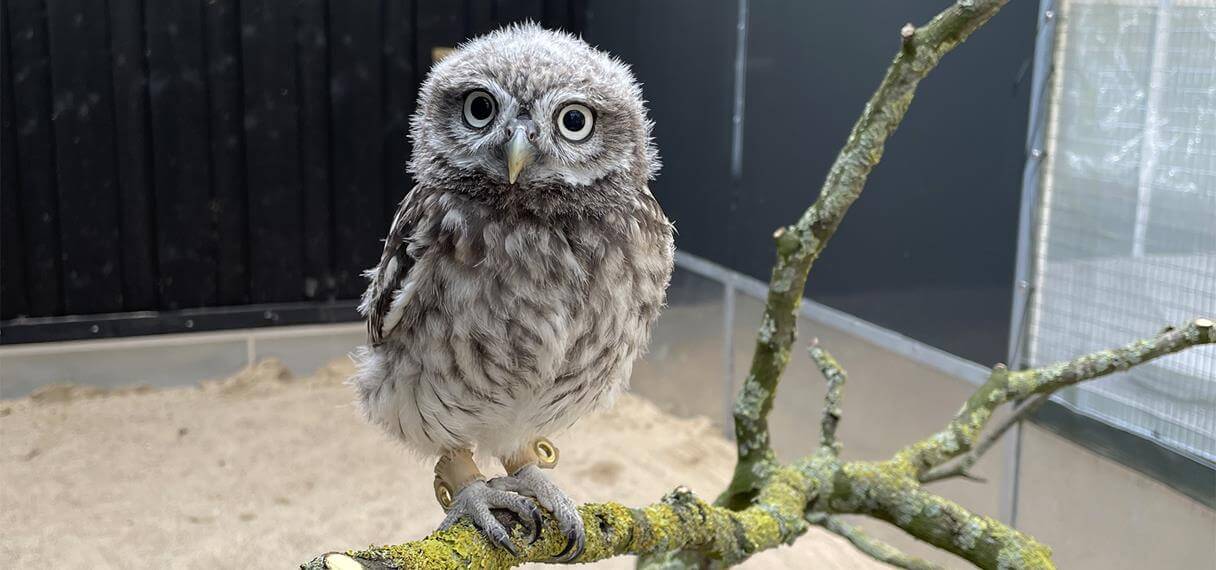
Wild Cats Conservation Alliance
At the Sumatran tigers in Aalborg Zoo's predator house, we started a collection in 2018 for the Wild Cats Conservation Alliance, which works in Kerinci Seblat National Park in Sumatra.
The wildlife in the area is under pressure from a number of threats such as poaching, road construction, illegal mining and deforestation.
The money raised goes towards law enforcement and investigations through regular patrols by National Park staff. In addition, help is provided in the event of tiger-human conflicts, which are on the rise as the population grows.
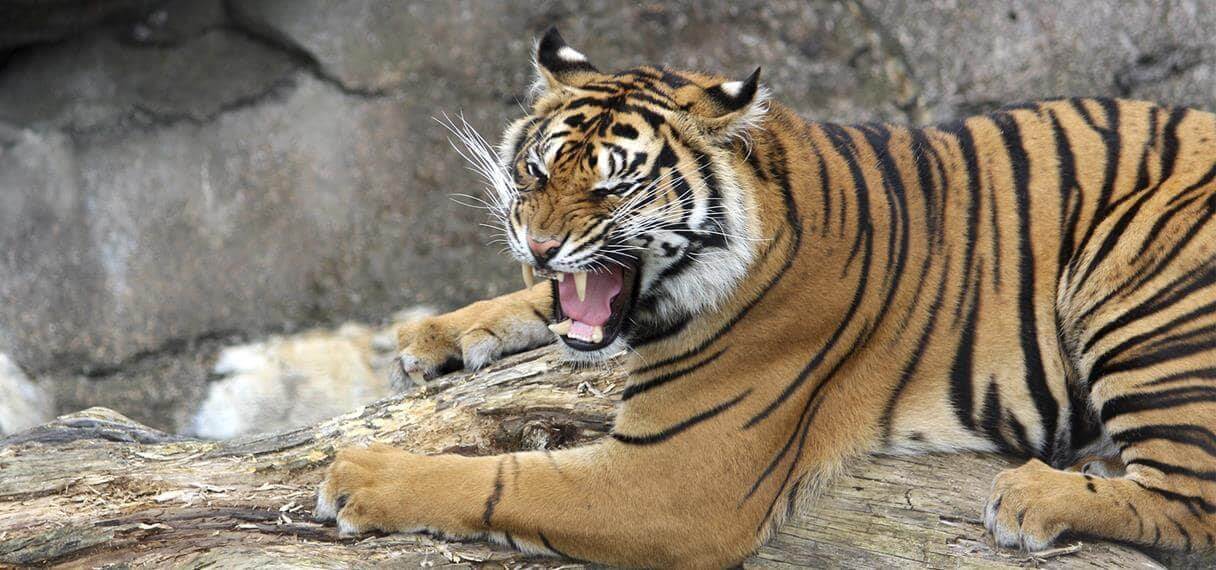
Dissemination
Communication at Aalborg Zoo aims to create great experiences for our guests and give them a greater understanding of nature conservation and the preservation of endangered species. In 2023, communication at Aalborg Zoo has also focused on strengthening the narrative about the Zoo's role as a conservationist, so that our communication is in line with the Zoo's overall strategy. Under the theme, we have organised a number of different events within the Zoo, but we have also moved parts of our communication out of the building. For example, we participated again in 2023 with a stand at the Nature Meeting in Hirtshals.
In 2023, we created an educational project for the construction of Aalborg Zoo's new Madagascar facility. The project focused on interactive communication, where guests could learn more about Madagascar and its fascinating wildlife in an engaging way.
Record in the School Service
In 2023, 9288 students and teachers were trained in one of the 11 subjects offered by Skoletjenesten. This figure is almost identical to 2022 and is the second consecutive year with the highest number of students trained since 2009.
The goal for 2020-2025 is to add at least two new presentations and implement the 17 UN Sustainable Development Goals, as these also play an important role in Aalborg Zoo's new strategy. In 2023, in collaboration with UCN, we developed a presentation for the School Service based on the UN Sustainable Development Goals and Play and Learning. The presentation is ready for the first students in 2024.
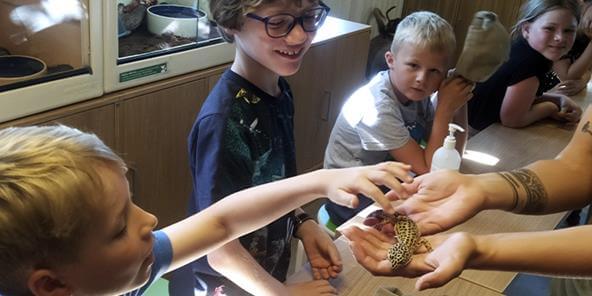
Science festival
The Science Festival in week 39 is an integral part of Aalborg Zoo's outreach programme and fits in well with Aalborg Zoo's overall strategy. In 2023, the festival was attended by several of the upper secondary schools in Aalborg, as well as UCN, AAU and the Nature Schools in Aalborg Municipality and was visited by 11,272 Zoo visitors, including 6,522 children and young people from North Jutland primary schools.
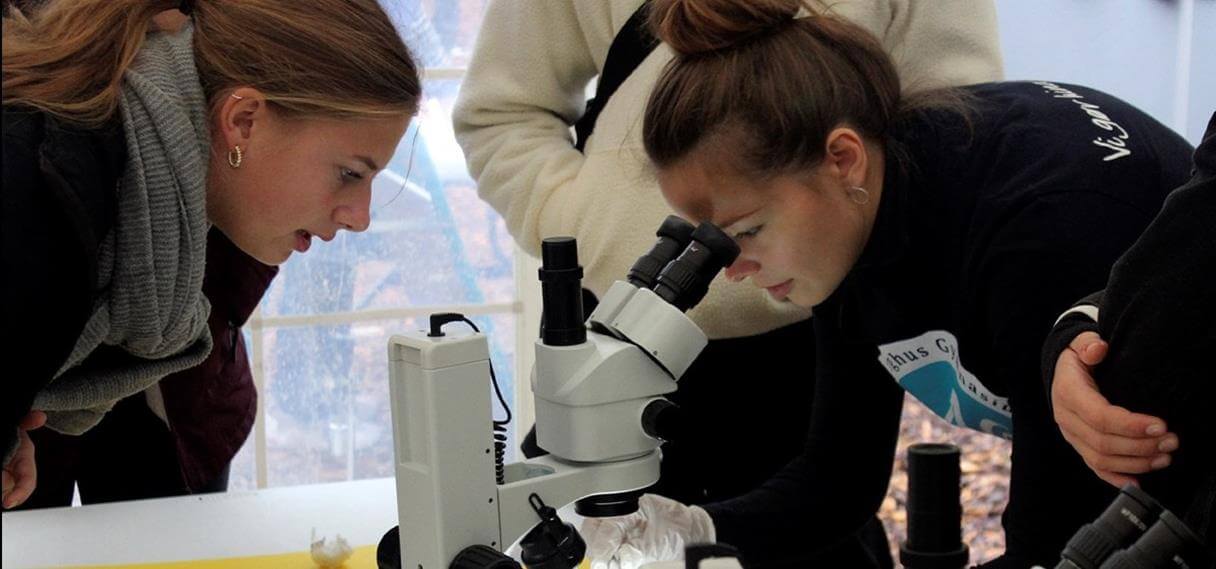
Research and development
Research is an important part of Aalborg Zoo's work, and since 2010 we have had official status as a research institution. That same year, we initiated a collaboration with Aalborg University, which involves several scientific sub-employees, close collaboration on thesis students, bachelor students and project work over several semesters.
The knowledge generated about the animals benefits both the animals in the Zoo and the wild populations. Research is conducted in behavioural biology, genetics, population biology and health. The research is both part of the daily work with the animals at the Zoo and as planned studies. Aalborg Zoo also supports research financially through the Aalborg Zoo Conservation Foundation - AZCF and awards DKK 150,000 to support projects each year. The projects are qualified by a scientific panel consisting of researchers from Aalborg and Aarhus Universities and Aalborg Zoo's own scientific staff.
Publications
Professor Cino Pertoldi and Associate Professor Trine Hammer Jensen are behind a large number of behavioural studies at Aalborg Zoo. Cino Pertoldi has implemented special statistical calculations for the behavioural observations, also called "behavioural instability".
In 2023, they published studies of orangutan behaviour that were particularly interesting in relation to the rebuilding of our facility and the arrival of the two new orangutans.
In 2023, Cino Pertoldi has also published articles on genetic and population biology studies of martens, foxes, amphibians and interesting drone, wind turbine and corona studies. Trine Hammer Jensen has written a book chapter for Fowler's Zoo and Wildlife Medicine on avian influenza and contributed to two articles on red panda amdovirus and the parasite burden of mink.
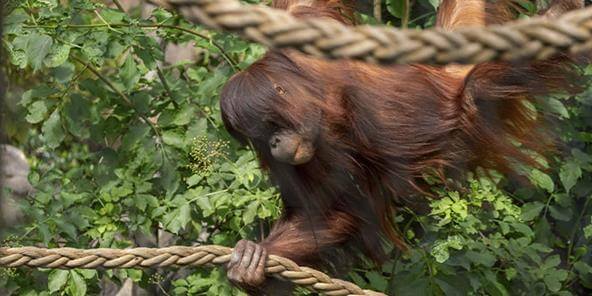
International research contributions
When we anaesthetise animals, for example in connection with health examinations, transport or similar, blood samples and any other material are taken to the EAZA biobank. This material can then be used by researchers around the world to study diseases, genetics, etc.
We also send samples and organs to current research projects at universities and other zoos around the world. In this way, we can contribute to the understanding of diseases, physiological relationships, genetic relationships and thus the conservation of species.
A large number of studies and projects are carried out under the auspices of EAZA, focusing on feeding, diseases, enclosures, enrichment and enclosure design. By participating in these studies, we can help ensure continuous improvement in the daily management of animals in zoos. We also share our information in the animal registration programme ZIMS-Species 360 with breeding programmes and other relevant people who can make use of it.
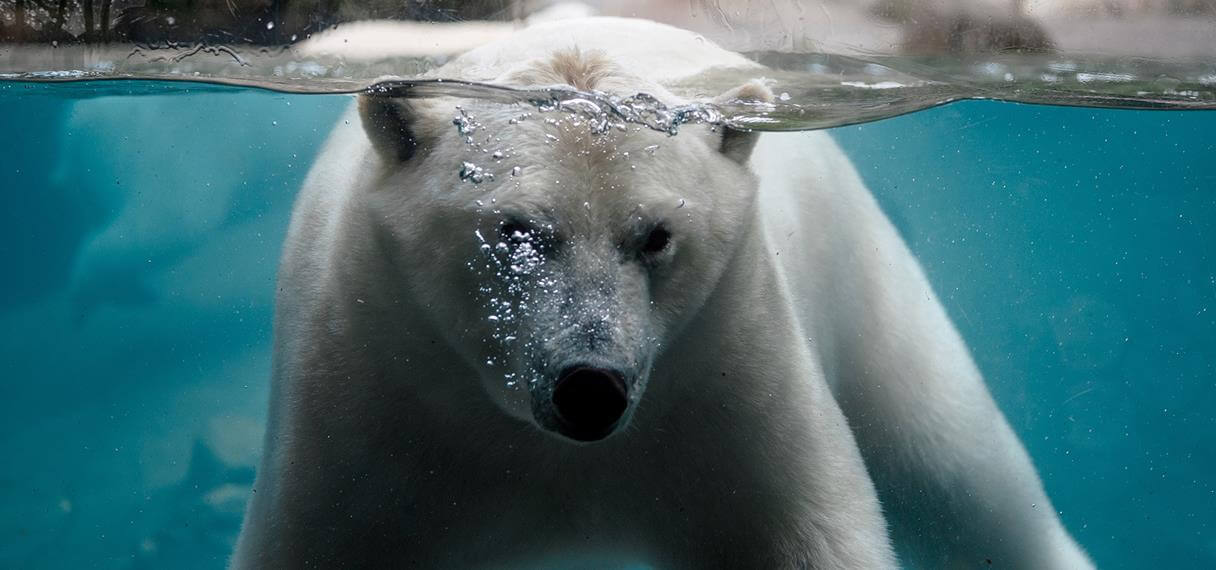
Greenland project
As the first zoo in the world, Aalborg Zoo is working with AAU to secure funding for a department that will focus solely on Greenland. As part of the project, a research station will be established from which field research and other joint activities with AAU, including hiring PhD students, organising workshops, etc. can be visibly communicated.
Sustainable operations
Aalborg Zoo's mission is to communicate knowledge about animals and nature through wildly fascinating experiences and contribute to nature conservation locally and globally and by contributing to the preservation of animal species and their habitats through breeding co-operation, research and communication. Implicit in this is that the greatest possible consideration is given to the surrounding environment, precisely as a habitat for the fauna we want to preserve. Aalborg Zoo works with the environment in several ways.
We continuously focus on reducing our consumption of natural resources such as energy, especially water, heat and electricity. Through waste sorting, we contribute to the recycling of materials, and when choosing materials and feed, we choose local, sustainable and organic where technically and economically possible.
A natural step on the journey to reduce our climate footprint is to explore the possibilities of using and producing green power. In 2023, we therefore set up a working group to explore various options based on the garden's areas. The work is supported by a grant of DKK 500,000 from the Danish Agency for Culture and Palaces' pool for energy improvement measures at institutions in the Ministry of Culture and will continue in 2024.
Environmental certification
In 1999, Aalborg Zoo was environmentally certified according to DS/EN ISO 14001, as the first zoo in the world.
The 24 years of a well-functioning environmental management system means that employees have workflows and procedures deeply ingrained, making safety and environmental awareness a natural and integral part of our everyday work.
In 2023, we started work on Green Attraction certification. The plan is that the ISO 14001 environmental certification will be cancelled, but that we will retain the ISO 45001 occupational health and safety certification, as the Green Attraction certification does not cover occupational health and safety.
Key figures 2023
449,625 visitors
Revenue distribution
- Ticket revenue 47.6%
- Public subsidies 26.6%
- ZooShop and eateries 20,0%
- Sponsors 4.4%
- Other 1.4%
Expense distribution
- Operation and service 24.5%
- Dining and retail 20.6%
- Zoology and Interpretation Department 21.6%
- Sales and communication department 14.3%
- Financing/depreciation 12.5%
- Other 6.6%
- Extraordinary expenses 0.0%